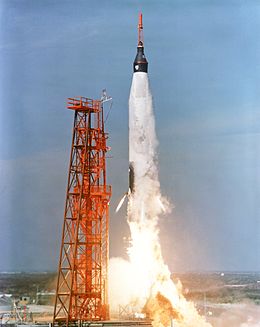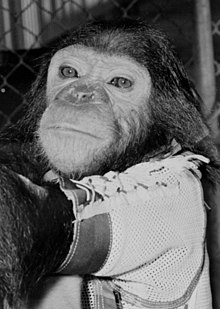 An Atlas rocket launches the Mercury-Atlas 5 into orbit, November 29, 1961 | |
| Mission type | Test flight |
|---|---|
| Operator | NASA |
| Harvard designation | 1961 Alpha Iota 1 |
| COSPAR ID | 1961-033A |
| SATCAT no. | 208 |
| Mission duration | 3 hours, 20 minutes, 59 seconds |
| Distance travelled | 81,902 kilometers (50,892 mi) |
| Orbits completed | 2 |
| Spacecraft properties | |
| Spacecraft | Mercury No.9 |
| Manufacturer | McDonnell Aircraft |
| Launch mass | 1,331 kilograms (2,934 lb) |
| Crew | |
| Crew size | 1 |
| Members | Enos |
| Callsign | Mercury-Atlas 5 |
| Start of mission | |
| Launch date | November 29, 1961, 15:07:57 UTC |
| Rocket | Atlas LV-3B 93-D |
| Launch site | Cape Canaveral LC-14 |
| End of mission | |
| Recovered by | USS Stormes |
| Landing date | November 29, 1961, 18:28:56 UTC |
| Orbital parameters | |
| Reference system | Geocentric |
| Regime | Low Earth |
| Perigee altitude | 158 kilometers (85 nmi) |
| Apogee altitude | 237 kilometers (128 nmi) |
| Inclination | 32.5 degrees |
| Period | 88.44 min |
| Epoch | November 29, 1961[1] |

 On the Mercury-Atlas 5 flight Enos became the first chimpanzee, and third primate, to orbit the Earth Project Mercury Mercury-Atlas series | |
Mercury-Atlas 5 was an American spaceflight of the Mercury program. It was launched on November 29, 1961, with Enos, a chimpanzee, aboard. The craft orbited the Earth twice and splashed down about 200 miles (320 km) south of Bermuda, and Enos became the first primate from the United States and the third great ape to orbit the Earth.